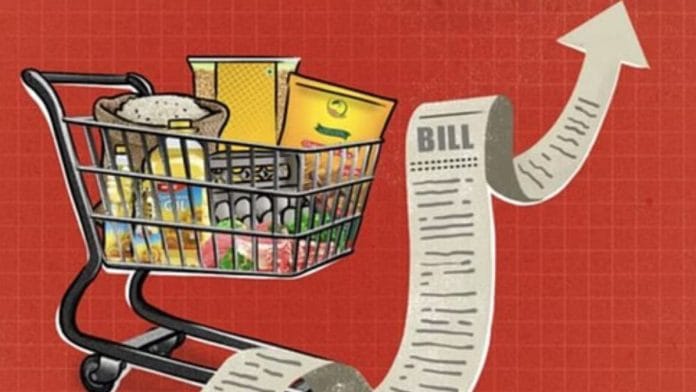Thank you dear subscribers, we are overwhelmed with your response.
Your Turn is a unique section from ThePrint featuring points of view from its subscribers. If you are a subscriber, have a point of view, please send it to us. If not, do subscribe here: https://theprint.in/subscribe/
Recently, India’s consumer inflation rate came to 3.65% in August of 2024, the second time in five years that CPI fell below RBI’s target of 4%. While this is progress, inflation targeting remains shortsighted in India. With the inflation rate in the food segment remaining volatile, Indian consumers continued to be concerned about rising food prices. Still today, food prices affect inflation dynamics more than any other factor as half of the consumer basket in India, approximately 46% comprises food items.
One of the major factors contributing to the volatility of food prices is the influence of variable monsoon weather. The impact of rain on harvests is very impactful in India due to the lack of modern water management techniques. The farmers still rely on an ideal monsoon to produce a good harvest. When excessive or limited rain occurs, it can cause potential crop damage and lead to food shortages and hence our control of food prices.
India also has a weak food supply chain arising from transportation challenges. Perishable items are wasted due to the lack of efficient storage facilities, causing a reduction in food products availability and raising prices. This increased cost of food eats into discretionary incomes and decreases consumer spending for the average Indian and slows down the country’s economy.
Additionally, food inflation is at risk of spreading worldwide due to rising prices in India. Indian products are now imported by over forty countries across Asia and Sub-Saharan Africa. Over the past decade, the country has become the world’s largest rice exporter and the second-largest sugar and onion exporter. There are millions of people across Asia and Africa who consume rice as part of their staple diet, and India is a major supplier to these markets. Therefore, decisive policy action is required in India to achieve long-term stability in global food prices.
The government needs to implement strategies that focus on improving agricultural productivity, increasing supply chain efficiency, and reducing adverse weather conditions’ impact on food production. Investing in developing a strong logistics and storage system can also reduce food waste and prevent price fluctuations by ensuring a consistent food supply even when there is lower crop production. For example, refrigerated trucks can transport perishable goods in a viable state to markets, reducing spoilage and increasing fresh produce availability. In addition, developing agricultural technology and investing in crop research can increase crop yields, ensuring a steady supply even during harsh weather conditions. Drip irrigation techniques, for instance, can lead to significant water savings and increased crop productivity in water-scarce regions. Adopting climate-smart agricultural practices, such as rainwater harvesting can help mitigate the impact of variable monsoon on food prices. For example, cultivation of drought-resistant crop varieties can safeguard against crop failures during periods of water scarcity or extreme weather events.
Inflation can further be prevented by implementing mechanisms to monitor food prices regularly and enforce fair pricing practices. During times of high demand, retailers can be prevented from overcharging consumers by enforcing a maximum retail price for limited terms on essential food items. These policies will not happen overnight and will need decades of effort, but in my view are essential not just for stable prices in India but also at a global level.
These pieces are being published as they have been received – they have not been edited/fact-checked by ThePrint.


